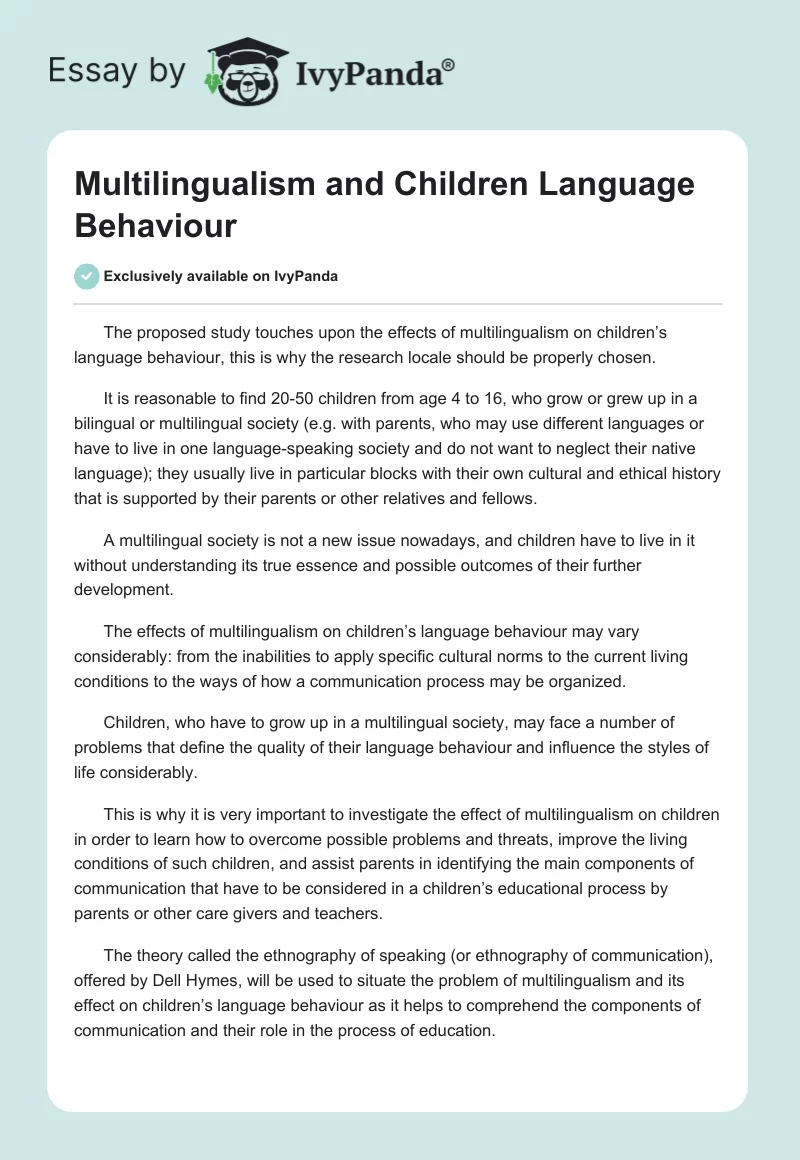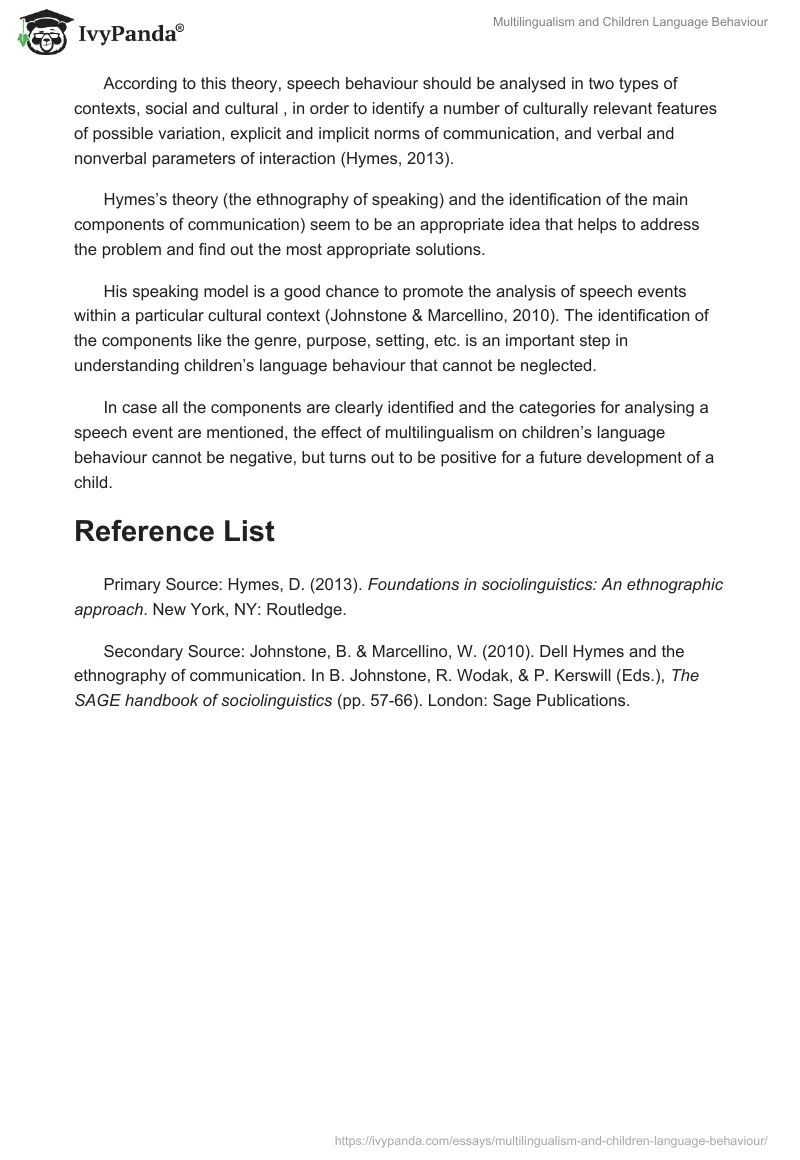The proposed study touches upon the effects of multilingualism on children’s language behaviour, this is why the research locale should be properly chosen.
It is reasonable to find 20-50 children from age 4 to 16, who grow or grew up in a bilingual or multilingual society (e.g. with parents, who may use different languages or have to live in one language-speaking society and do not want to neglect their native language); they usually live in particular blocks with their own cultural and ethical history that is supported by their parents or other relatives and fellows.
A multilingual society is not a new issue nowadays, and children have to live in it without understanding its true essence and possible outcomes of their further development.
The effects of multilingualism on children’s language behaviour may vary considerably: from the inabilities to apply specific cultural norms to the current living conditions to the ways of how a communication process may be organized.
Children, who have to grow up in a multilingual society, may face a number of problems that define the quality of their language behaviour and influence the styles of life considerably.
This is why it is very important to investigate the effect of multilingualism on children in order to learn how to overcome possible problems and threats, improve the living conditions of such children, and assist parents in identifying the main components of communication that have to be considered in a children’s educational process by parents or other care givers and teachers.
The theory called the ethnography of speaking (or ethnography of communication), offered by Dell Hymes, will be used to situate the problem of multilingualism and its effect on children’s language behaviour as it helps to comprehend the components of communication and their role in the process of education.
According to this theory, speech behaviour should be analysed in two types of contexts, social and cultural , in order to identify a number of culturally relevant features of possible variation, explicit and implicit norms of communication, and verbal and nonverbal parameters of interaction (Hymes, 2013).
Hymes’s theory (the ethnography of speaking) and the identification of the main components of communication) seem to be an appropriate idea that helps to address the problem and find out the most appropriate solutions.
His speaking model is a good chance to promote the analysis of speech events within a particular cultural context (Johnstone & Marcellino, 2010). The identification of the components like the genre, purpose, setting, etc. is an important step in understanding children’s language behaviour that cannot be neglected.
In case all the components are clearly identified and the categories for analysing a speech event are mentioned, the effect of multilingualism on children’s language behaviour cannot be negative, but turns out to be positive for a future development of a child.
Reference List
Primary Source: Hymes, D. (2013). Foundations in sociolinguistics: An ethnographic approach. New York, NY: Routledge.
Secondary Source: Johnstone, B. & Marcellino, W. (2010). Dell Hymes and the ethnography of communication. In B. Johnstone, R. Wodak, & P. Kerswill (Eds.), The SAGE handbook of sociolinguistics (pp. 57-66). London: Sage Publications.


